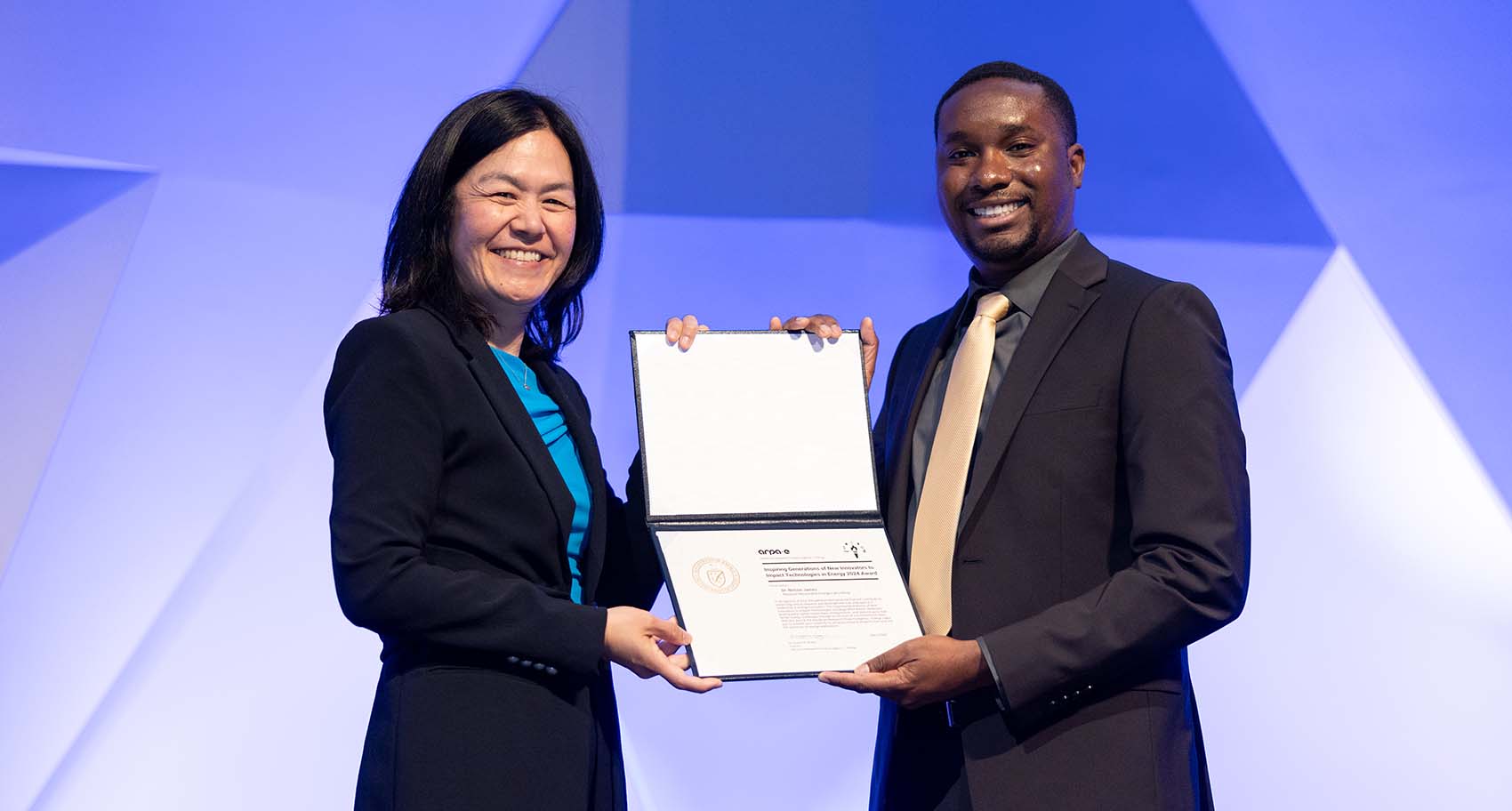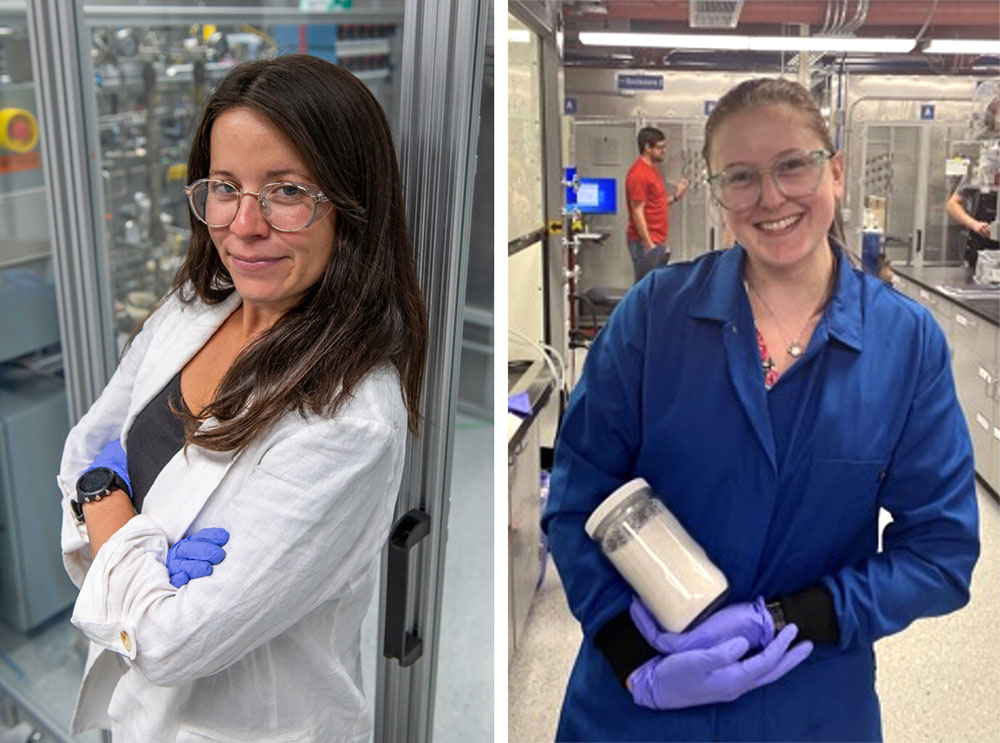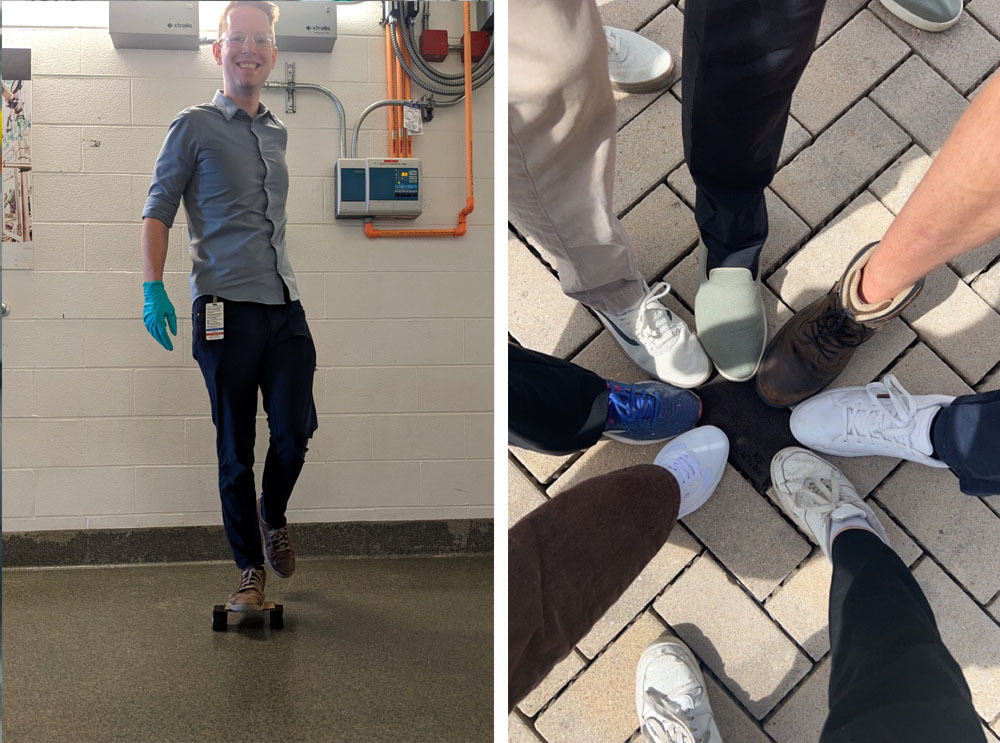Inspiring and Creative: Three NREL Researchers Recently Honored by the Advanced Research Projects Agency-Energy
The Advanced Research Projects Agency-Energy (ARPA-E) announced approximately $11.5 million in funding through its new Inspiring Generations of New Innovators to Impact Technologies in Energy 2024 (IGNIITE 2024) program. Three researchers from the National Renewable Energy Laboratory (NREL) are among the inaugural class of selectees.
This program is unique for ARPA-E in that it funds individual researchers instead of a project team. With IGNIITE 2024, ARPA-E aims to empower early-career scientists and engineers in becoming independent researchers and unleashing their creativity to address the urgent energy-related challenges our society currently faces.
Each selectee will receive approximately $500,000 to advance research projects at universities, national laboratories, and in the private sector.

Nelson James, Katrina Knauer, and Paul Meyer are NREL’s IGNIITE 2024 awardees. ARPA-E awarded 23 individuals with this new program, and NREL’s three selectees reflect the highest number of any other organization.
“We need an infusion of unconventional ideas from the next generation of researchers, entrepreneurs, and technologists to tackle energy challenges of today,” ARPA-E Director Evelyn N. Wang said in the IGNIITE press release. “As an engineer who benefited from support early on in my career, I know how instrumental resourcing and expert guidance is to successful innovation. By supporting this cohort of early-career innovators, I am confident that we are one step closer to a sustainable clean energy future.”
The work of the 23 IGNIITE recipients will span the full spectrum of energy applications, including advanced energy storage systems, fusion reactor technology, carbon-negative concrete alternatives, power electronics for grid reliability, critical material recovery, energy-efficient water desalination, plastic depolymerization, and more.

Nelson James brings a passion for building decarbonization to the design of his IGNIITE-awarded proposal for a proof-of-concept prototype of a multifunctional heat pump that will reduce carbon emissions from heating and cooling—and improve building resilience because it will also provide energy storage—all in one package.
Unlike current technologies, James’ heat pump design employs electrochemical processes, as opposed to the mechanical process we use today. His design uses working fluids for heating and cooling that are not only cheaper to produce but more environmentally friendly than current materials.
In the United States, heating and cooling accounts for roughly 20% of greenhouse gas emissions. Once scaled for commercial use, James’ design has the potential to significantly reduce this sector’s environmental impact—and provide more energy resilience during emergencies.
“ARPA-E allows us to explore unconventional methods that might not be funded by anyone else,” James said. “And if we’re successful, we have the opportunity to deploy our design at a larger scale and partner with other organizations to have a significant impact on carbon emissions.”
Tackling the Plastic Beast Through More Effective Recycling

Katrina (Kat) Knauer is a polymer scientist on the U.S. Department of Energy’s BOTTLE™ (Bio-Optimized Technologies to keep Thermoplastics out of Landfills and the Environment) consortium at NREL. Her IGNIITE-awarded design is a new process for mixed plastic recycling.
Currently, every type of plastic recycling has been designed for one specific kind of material only, most notably one of the polyesters called polyethylene terephthalate that is in water bottles, soda bottles, and more—but the plastics supply chain will never be homogenous.
Knauer’s design for plastics recycling targets a common bond in all polyesters, which can be either fossil-fuel derived or biologically based, so any polyester can go into the same recycling process. This will allow us to more effectively recycle materials into useful carbons and is a step toward decarbonizing the plastic supply chain.
“ARPA-E takes chances on funding concepts that seem a little impossible, but we are using those funds to get closer to making this idea possible,” Knauer said. “We want to use the IGNIITE funds to take the risk out of developing this technology and transfer it to a startup called EsterCycle, where they will scale it up into a new recycling technology for polyesters.”
Growing Foundationally Different Building Blocks: Lignin as Cement Alternative

Paul Meyer is a chemist who said they “do their best to shoehorn polymer chemistry into every aspect of research, especially into fields where polymer chemistry is not invited.” Their IGNIITE-awarded project is to develop an alternative to current concrete production, which is a notoriously resource-intensive process that contributes as much as 2% of the energy-related carbon emissions from the United States and up to 7% of the world’s carbon energy.
Cement serves as the binder within concrete. It is also where 93% of carbon emissions come from in concrete production: About 1 ton of CO2 is released for each ton of cement used. Meyer’s alternative replaces the cement in concrete with a lignin-based resin. Lignin is the material in plants that makes them sturdy, and the pulp and paper industry creates about 100 tons of lignin per year, nearly all of which is burned as low-value fuel, as an economical alternative does not yet exist. Meyer is using lignin to produce a substance that acts like an epoxy resin, which can be even stronger than cement.
“This is a fundamental shift in the way we do concrete—using organic chemistry versus inorganic chemistry. A small niche market of other polymer concretes uses epoxy resins but they’re expensive, both monetarily and in emissions,” Meyer said. “Right now, with our process we are looking at about 80% carbon reduction, higher strengths, and approaching cost competitiveness. If we’re lucky, we could disrupt a $900 billion industry.”
How ARPA-E Helps NREL Transform Energy by Changing What’s Possible
ARPA-E funds high-risk, high-reward R&D for technologies that are too early in their development to be commercially viable as private-sector investments. Awardees through ARPA-E are developing new ways to reduce energy-related imports and greenhouse gas emissions and increase energy efficiency and the resilience, reliability, and security of energy infrastructure. These projects have the potential to positively impact the United States’ energy sector and improve the country’s economic prosperity, national security, and environmental well-being.
These three researchers are part of the inspiring and unconventional research converting disruptive ideas into impactful energy technologies at NREL and across the United States.
Learn more about ARPA-E’s IGNIITE 2024 selectees.
Last Updated May 28, 2025
